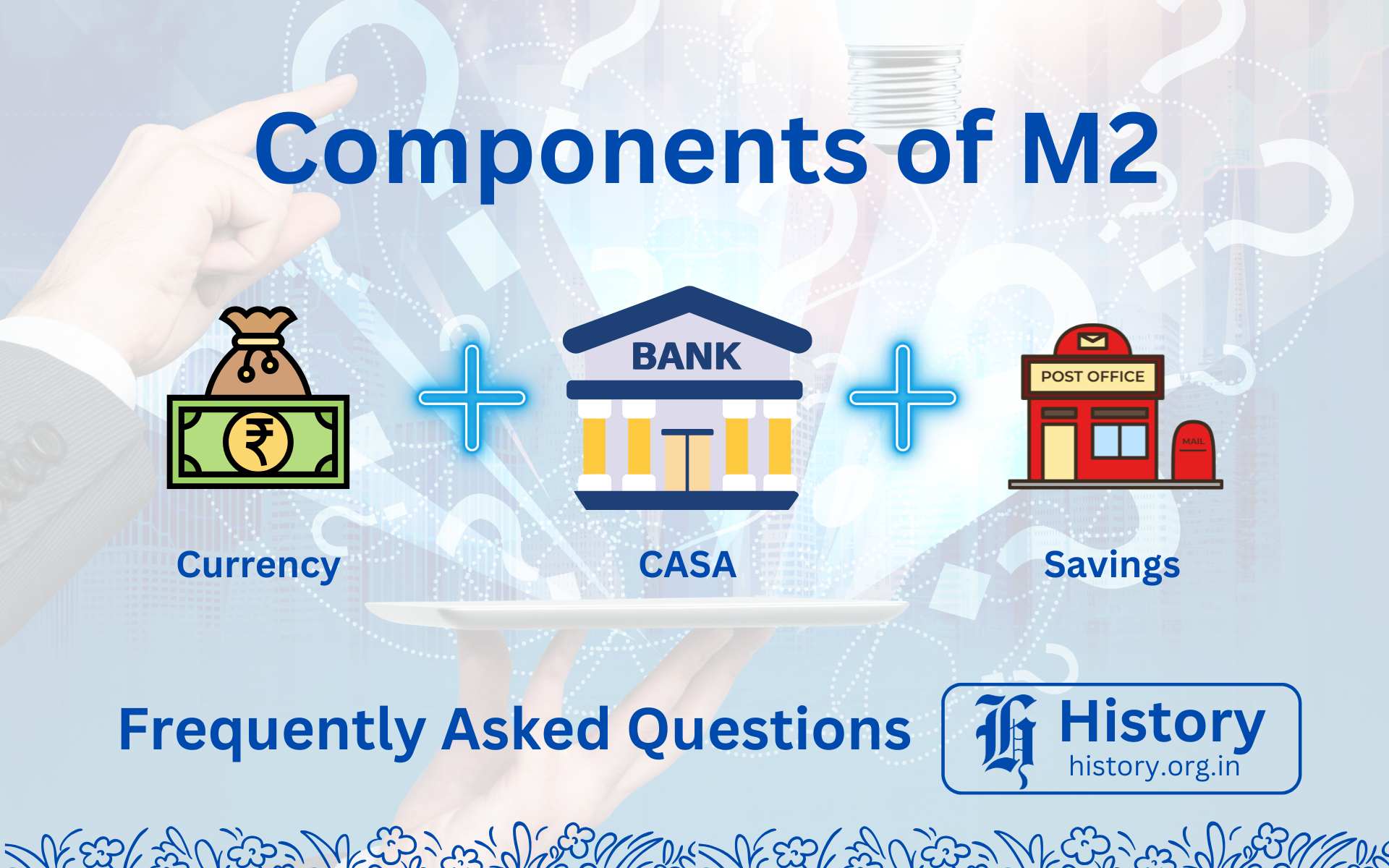In India, M2 money consists of M1 (the currency supply + CASA) plus savings deposits at the post office. This is also a part of Liquid Money which can be instantly accessed by the customer without having to wait momentarily.
Together with M1, the M2 money supply is called as narrow money or liquid money.
Read More: The History of Money
Components of M2
1. M1
M1 consists of two parts:
- All the currency supply in the country (bank notes and coins).
- All the Current and Savings Account in the country.
This is the money which can be readily accessed by people in need either though ATMs across the country, or via digital payment services like UPI, NEFT, Bank Transfer, etc.
Generally currency notes form less than 1% of the total money in circulation in the country and less than 0.001% of all the wealth in the country. This is done to check the reliance of public in currency notes. It also helps in identifying counterfeit notes and coins.
Since it is readily accessible when required, it is called as Narrow Money or Liquid Money.
2. Liquid Deposits – Post Office Savings Account
The funds in the savings account in the Post Office is the additional component of M2.
- Post Office Savings Bank – Regular
- Senior Citizen Saving Scheme Account
Please note that the Post Office does not offer current accounts.
The Post Office is one of the largest banking services provider in India and banks millions of rural villages across the country, where even Regional Rural Banks have little access.
Other Post Office Deposit Schemes that are a part of M3 but not a part of M2:
- National Savings Recurring Deposit Account
- National Savings Time Deposit Account
- National Savings Monthly Income Account
- Public Provident Fund Account
- Sukanya Samriddhi Account
- National Savings Certificates
- Kisan Vikas Patra
- Mahila Samman Savings Certificate
Why is M2 Money Calculated?
M2 is the fastest accessible money in the Indian economy and signifies the amount of liquidity in it. M2 has to be under a certain limit for the economy to function properly.
If it is too high, it may result in inflation, which is essentially too much money chasing too less goods and services in the economy. To solve this scenario, central banks raise interest rates which sucks all the excess liquidity from the economy and brings M2 at a balanced level (hawkish policy).
If it is too low, it can hinder economic growth, which is the situation when too less money is unable to settle all the pending dues in the economy. As a result, past payments remain unpaid stopping people from working harder. This is dealt with reducing the interest rate which then infuses more money in the economy via central banks (dovish policy).
What is M1, M2, M3 and M4 in Money Supply?
In India, the money supply is distributed in 5 components, starting from M0 to M4.
- M0 refers to the money that the government i.e., the central bank (RBI) has. It is called high powered money.
- M1 refers to all the currency notes (and coins) and CASA deposits with banks in the country.
CASA is total funds in Current Accounts and Savings Accounts with banks in India.
- M3 refers to all the currency in circulation, current account funds, savings account funds, recurring deposits funds, fixed deposits funds in banks and with the Post Office.
- M4 refers to all the liquid and non-liquid money plus money market funds (bonds, loans, etc.) in the country.

